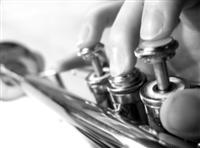 All teachers will inevitably run into a brass student that struggles to produce a solid, focused tone, but even those with the most stubborn embouchure problems can be helped with a little common sense and more than a little ingenuity.
All teachers will inevitably run into a brass student that struggles to produce a solid, focused tone, but even those with the most stubborn embouchure problems can be helped with a little common sense and more than a little ingenuity.
Â
“A great way to diagnose difficult embouchure and buzzing problems is to simply ask the student to become the teacher for a moment.†says Matthew Parunak, a music educator from Chapel Hill, North Carolina. “Ask the student how sound is created with a brass instrument. They should know and be aware that the lips vibrate as a result of the air passing over them and into the mouthpiece to create the buzz. Anything that doesn't accomplish this efficiently needs to be changed in order to do so. By listening to the student's instructions a teacher can often discover exactly what the student's real problems are and then take decisive steps toward fixing them.â€
Once a teacher knows what the student is doing wrong it is time to teach them how to do it right. The vast majority of problems can be broken down into two parts, air supply and muscle control. Getting a good sound on any instrument always starts with a good steady supply of air,†continues Parunak, “without steady pressure the lips simply cannot do their job no matter how firm or relaxed the embouchure may be.â€
Teaching a student to exhale in a controlled manner must start with teaching the student to inhale properly. Even when a student takes what they perceive to be a deep breath the student will only utilize around 75% of their lung's capacity. Expanding the lungs to their fullest requires more than just the work of the diaphragm. Easy and fun breath building exercises or special breath building devices such as spirometers (available at many medical supply stores) or the popular Breath Builder Isometric Exercisers (available at most music stores) can help a student visually see the amount of air they are taking in and blowing out. A vital resource for learning how to teach the deceptively easy concept of breathing and blowing is the very popular book and DVD series called, The Breathing Gym, by Patrick Sheridan and Sam Pilafian.
Once the air supply has been fixed, buzzing properly becomes a top priority. Do not get discouraged if at first a student cannot buzz a wide range of notes. Building the muscles of the embouchure takes time and practice, just as it does for a body builder working out at a gym. Techniques such as having the student do sizzle sirens- hissing and then buzzing with a firm “poo†or “emmm†shaped embouchure while increasing and decreasing air pressure from the diaphragm- will increase flexibility in the embouchure and over time increase the student's range.
